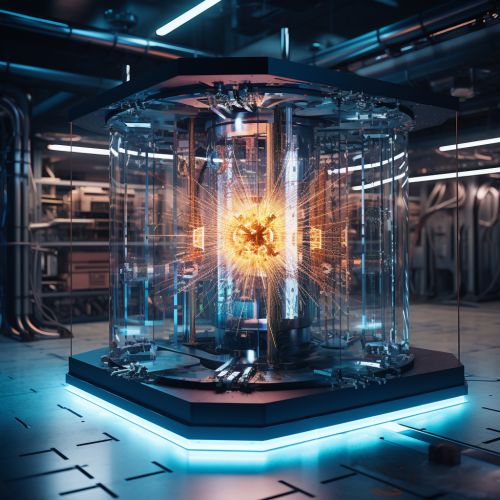Advances in Quantum Computing with Quantum Error Correction
Introduction
Quantum computing is a rapidly evolving field that leverages the principles of quantum mechanics to process information. Unlike classical computing, which uses bits as the smallest unit of data, quantum computing uses quantum bits, or qubits, which can exist in multiple states simultaneously due to the quantum phenomena of superposition and entanglement. This allows quantum computers to perform complex calculations much more efficiently than classical computers. However, qubits are extremely sensitive to their environment, and even the smallest disturbance can cause errors in their state, a problem known as quantum decoherence. To address this issue, researchers have developed quantum error correction techniques, which are the focus of this article.


Quantum Error Correction
Quantum error correction is a set of techniques designed to protect quantum information from errors due to decoherence and other quantum noise. These techniques are essential for the development of reliable and scalable quantum computers.
Quantum Decoherence
Quantum decoherence is the loss of quantum coherence, or the ability of a quantum system to exist in multiple states simultaneously. This is caused by interactions with the environment, which can introduce errors into the quantum system. Decoherence is a major obstacle in quantum computing because it can cause qubits to lose their quantum properties, rendering them useless for computation.
Quantum Error Correction Codes
Quantum error correction codes are algorithms that can detect and correct errors in qubits. These codes work by encoding a logical qubit into multiple physical qubits, creating a form of redundancy. If an error occurs in one of the physical qubits, it can be detected and corrected by comparing it to the other qubits.
One of the most well-known quantum error correction codes is the Shor's code, named after mathematician Peter Shor. Shor's code can correct for arbitrary errors in a single qubit by encoding it into nine physical qubits. Other notable quantum error correction codes include the Steane code and the surface code, each with their own strengths and weaknesses.
Advances in Quantum Error Correction
Significant progress has been made in the field of quantum error correction in recent years. This section will discuss some of the most notable advancements.
Fault-Tolerant Quantum Computing
One of the major milestones in quantum error correction is the development of fault-tolerant quantum computing. This is a method of performing quantum computations in such a way that even if some physical qubits are faulty or experience errors, the overall computation can still be carried out correctly.
Fault-tolerant quantum computing relies heavily on quantum error correction codes. By encoding logical qubits into multiple physical qubits, errors in individual qubits can be detected and corrected without disrupting the overall computation.
Improved Error Correction Codes
In addition to the development of fault-tolerant quantum computing, there have also been improvements in the error correction codes themselves. Researchers have developed new codes that are more efficient, more robust against errors, and easier to implement in physical quantum systems.
One example of such a code is the topological quantum error correction code. These codes use the properties of topological phases of matter to protect quantum information from errors. Topological codes are particularly promising because they are robust against a wide range of errors and require fewer physical qubits to encode a logical qubit compared to other codes.
Scalable Quantum Computers
Another significant advancement in quantum error correction is the development of scalable quantum computers. These are quantum computers that can be easily scaled up in size to increase their computational power.
Scalable quantum computers require robust error correction techniques to ensure that as the number of qubits increases, the rate of errors does not also increase. Advances in quantum error correction have made it possible to build scalable quantum computers that can perform complex computations with a high degree of accuracy.
Conclusion
Quantum error correction is a critical component of quantum computing. Without it, quantum computers would be highly susceptible to errors and decoherence, making them impractical for most computational tasks. Advances in quantum error correction, such as the development of fault-tolerant quantum computing, improved error correction codes, and scalable quantum computers, have brought us one step closer to the realization of practical, large-scale quantum computing.
